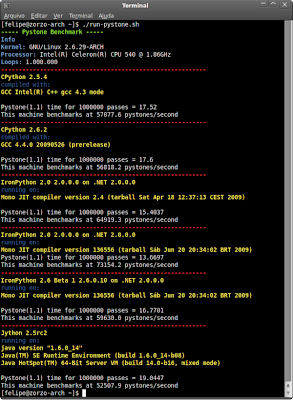The IronRuby Tutorial

Jimmy Schementi, program manager for the dynamic languages and Silverlight integration plus IronRuby developer, has pushed a new update to the IronRuby github repository . One of the major changes is improvements to the IronRuby tutorial app . "The" IronRuby Tutorial As you can see from the screenshot this is a WPF (Windows Presentation Foundation - which means it won't run on Mono) application which combines a tutorial with an integrated interpreter (REPL) for actually trying out the code: Isn’t he/she/it a bute!? This app makes Ruby-based tutorials interactive, guiding you through the material with a IronRuby REPL console and other visual aids such as another window, or whatever the tutorial writer sees fit. There is also a tutorial runner for the command-line, and a exporter for static HTML. The IronRuby tutorial included covers topics such as using the interactive window, built-in libraries, exploring .NET libraries, generics, events, Windows Forms, and Windows Prese...

